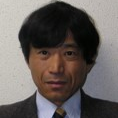Plants in Aquatic Ecosystems: Current Trends and Future Directions
A special issue of Water (ISSN 2073-4441). This special issue belongs to the section "Water Quality and Contamination".
Deadline for manuscript submissions: closed (31 December 2018) | Viewed by 6491
Special Issue Editor
Interests: aquatic plants; vegetation in floodplains; wetlands
Special Issues, Collections and Topics in MDPI journals
Special Issue Information
Dear Colleagues,
Hydrogen peroxide is an environmental stress indicator of submerged macrophytes in the lowland natural streams
It is well known that environmental stresses intensify the generation of reactive oxygen species (ROS) in plant tissues, among which H2O2 is a major component. The H2O2 is relatively stable relative to remaining ROS and is widely studied due to its function as a signaling molecule in response to external stimuli. Thus, the possibility of using the concentration of H2O2 in plant tissues as an indicator of environmental stress has been investigated.
Field observations conducted at several locations in natural streams in Japan, where Egeria densa was thickly colonized, revealed that H2O2 concentrations linearly increase with turbulence intensity. The total H2O2 concentration is approximately given by the sum of the H2O2 concentration generated by each stressor. A comparison of the fractions of H2O2 formation due to light stress and velocity stresses suggests that the oxidative stress from light stress and flow turbulence are the dominant stressors in natural streams.
Thus, the H2O2 concentration in submerged macrophytes can be considered as a suitable index of environmental stresses. This index can be applied in the monitoring and management of aquatic vegetation.
Prof. Takashi Asaeda
Guest Editor
Manuscript Submission Information
Manuscripts should be submitted online at www.mdpi.com by registering and logging in to this website. Once you are registered, click here to go to the submission form. Manuscripts can be submitted until the deadline. All submissions that pass pre-check are peer-reviewed. Accepted papers will be published continuously in the journal (as soon as accepted) and will be listed together on the special issue website. Research articles, review articles as well as short communications are invited. For planned papers, a title and short abstract (about 100 words) can be sent to the Editorial Office for announcement on this website.
Submitted manuscripts should not have been published previously, nor be under consideration for publication elsewhere (except conference proceedings papers). All manuscripts are thoroughly refereed through a single-blind peer-review process. A guide for authors and other relevant information for submission of manuscripts is available on the Instructions for Authors page. Water is an international peer-reviewed open access semimonthly journal published by MDPI.
Please visit the Instructions for Authors page before submitting a manuscript. The Article Processing Charge (APC) for publication in this open access journal is 2600 CHF (Swiss Francs). Submitted papers should be well formatted and use good English. Authors may use MDPI's English editing service prior to publication or during author revisions.
Keywords
- Egeria densa
- Hydrogen peroxide
- Light stress
- Natural streams
- Reactive oxygen species
- Solar radiation
- Turbulence





